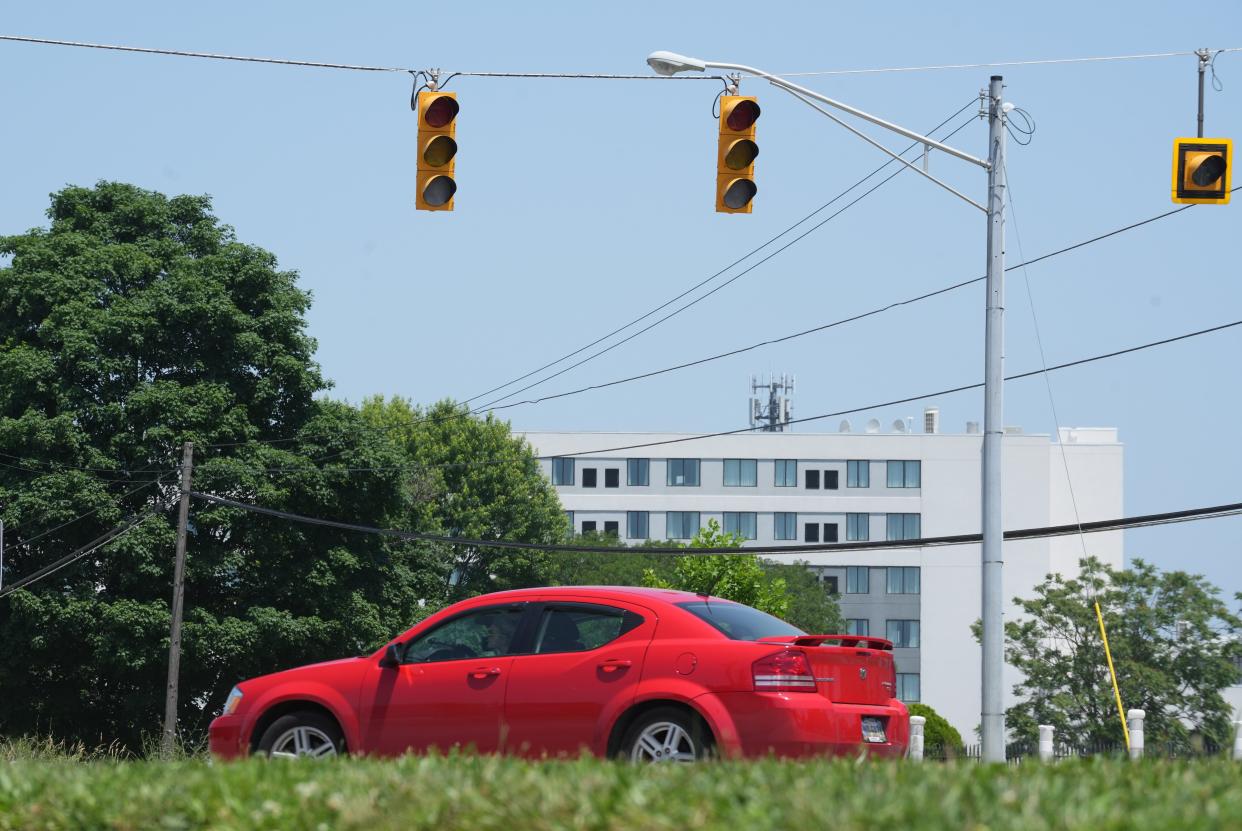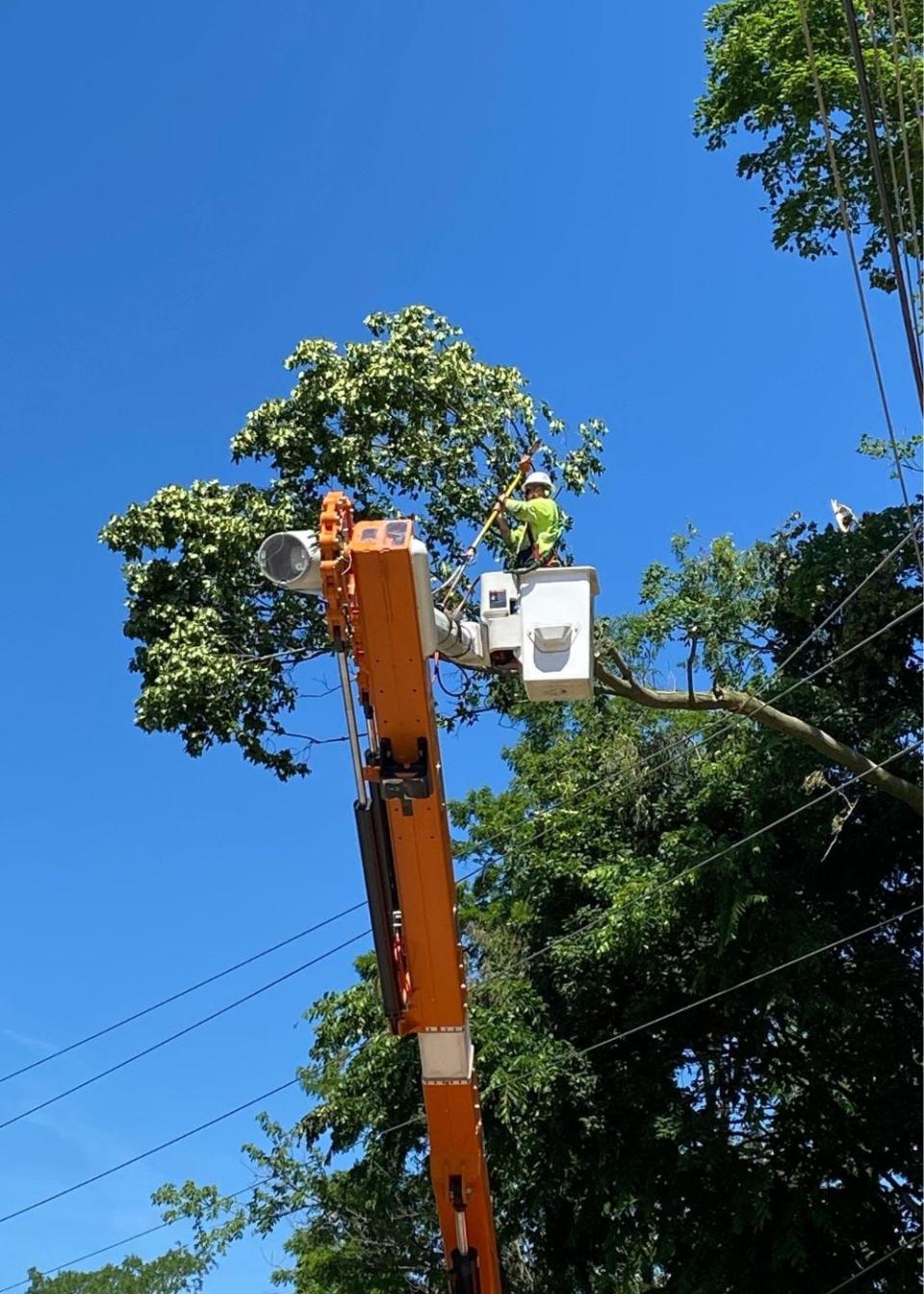Report credits AEP's June shutoffs with preventing more outages, but says utility should have communicated better

American Electric Power's decision to intentionally shut off power to thousands of homes in the Columbus area following severe storms and a heat wave in June prevented outages from spreading, according to a state report issued Tuesday.
The report from the Public Utilities Commission of Ohio said while AEP Ohio acted appropriately during the storm, it could do a better job of communicating with customers when outages like this happen and of trimming trees and other vegetation around its transmission system.
PUCO chair Jenifer French ordered the staff to complete the review last summer to gather more information about the outage and to see what could be learned from it.
AEP Ohio reported that about 606,000 customers lost power from June 13 to June 19 with a peak of 239,000 customers out of power around 9 p.m. on June 14. About 283,000 customers were impacted by AEP's intentional outages.
"The events of June 13 through June 16, 2022, caused significant disruption to the daily lives of manyOhioans," the report said.
While the company's actions did follow state laws and rules, the report said, "additional diligence regarding right-of-way vegetation management and better customer communication by the company will assist in addressing the aftereffects of these weather occurrences."
In a response to the report, AEP said: "We understand the significant impact of power outages for our customers and are committed to preparing for and responding to future severe weather events in a proactive and diligent manner."
Critics, though, contend that more needs to be done to understand exactly what happened with the outages and how affected customers should be treated, and one of them repeated a call from last summer for a full PUCO investigation into the outages.
"Energy justice for hundreds of thousands of AEP consumers who lost their electricity should be served with a process that is transparent and inclusive of the public and their representatives," the Ohio Consumers' Counsel said in a prepared statement. "While we appreciate today’s PUCO report, it begs questions including why there would be outages from electric wires damaged by trees considering the money that AEP charges consumers for tree-trimming.”
Powerful storms moved through northern Ohio on June 13 and 14, wreaking havoc with AEP's transmission system. The storms were followed by a heat wave that pushed temperatures near triple digits, driving up demand for electricity.

Storms knocked out several transmission lines, which carry large loads of power from generating sources to smaller distribution lines and substations, putting increased stress on the transmission lines that remained.
As a result, PJM Interconnection, which oversees the flow of electricity in all or parts of 13 states, including Ohio, ordered AEP to decrease electricity demand on parts of the stressed system in central Ohio to prevent outages from spreading. The decision is something that PJM does as a last resort.
The PUCO report said thousands of trees were downed along the path of the storms, many of which fell on homes, vehicles, and power lines causing widespread outages.
"After the failure of the initial transmission lines, the load transferred to other transmission lines still in operation. As the load began to increase, those lines had the potential to damage the facilities and ultimately fail," the report said. "Furthermore, the overloading and subsequent failure of lines can begin a cascading event. This would likely result in far more customers out of service than the number of customers affected by the load shed actions."
AEP had trimmed trees and vegetation around all seven transmission lines that directly contributed to the forced outages in 2021, according to the report. The lines did not appear to be affected by a lack of investment or when those investments were made, the report said.
The report said AEP should reevaluate its approach for managing vegetation, something AEP says it is doing. PUCO has asked AEP to file an updated transmission vegetation plan within 90 days.
AEP also was criticized for its communications with customers throughout the crisis, including not giving them enough warning to prepare for outages. AEP has said PJM gave it only 5 minutes notice to decide where power should be turned off.
PUCO's report said AEP should look at ways to improve communicating with customers during outages, such as trying to expand the number of customers who can receive text messages. The report also said AEP should improve its outreach plans to incorporate emergency responders and community leaders and their organizations.
Since the storms, AEP says it has trimmed hundreds of miles of vegetation, inspected more of its electric lines using advanced imaging technology, and met with members of the most affected communities to develop stronger relationships.
"The PUCO staff report confirms what we learned through our own review of the June 13-15 outages," AEP said. "Severe storms caused extensive damage to our electric transmission system and the extreme heat that followed caused several lines to overload. This required us to take emergency forced outages to protect the power grid, which included taking power lines that fed parts of Columbus out of service."
mawilliams@dispatch.com
@BizMarkWilliams
This article originally appeared on The Columbus Dispatch: AEP needs to improve tree trimming, communication after summer outages

